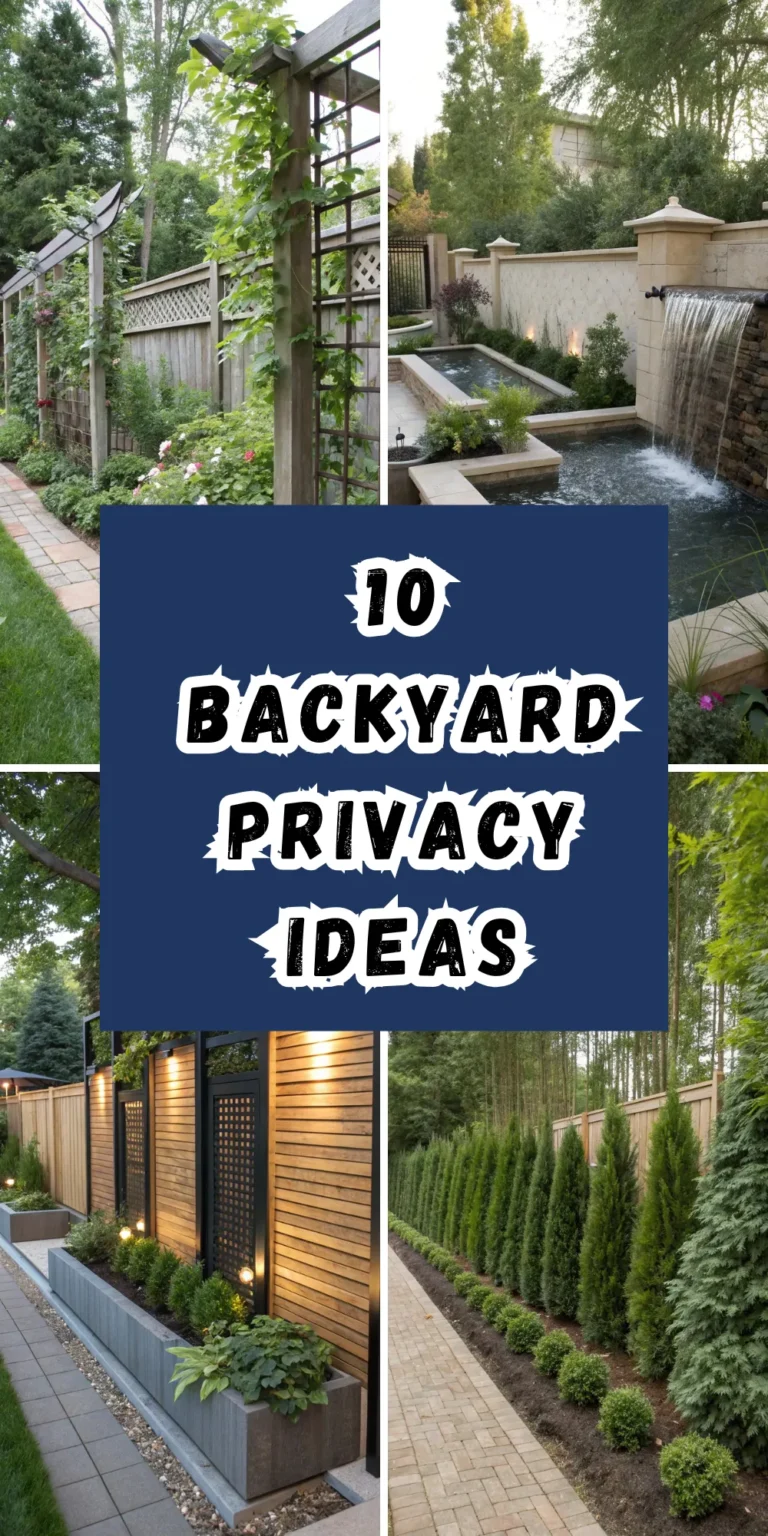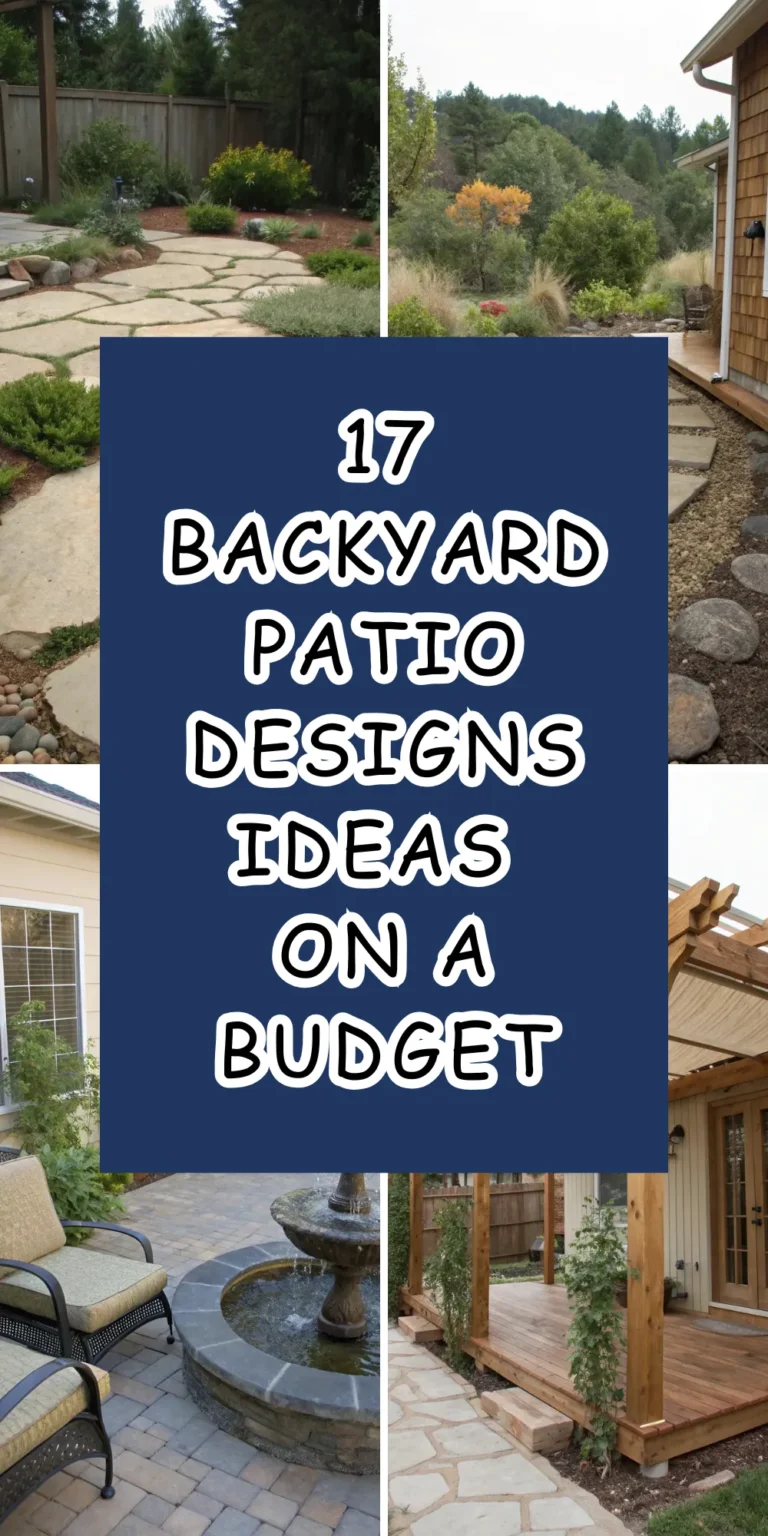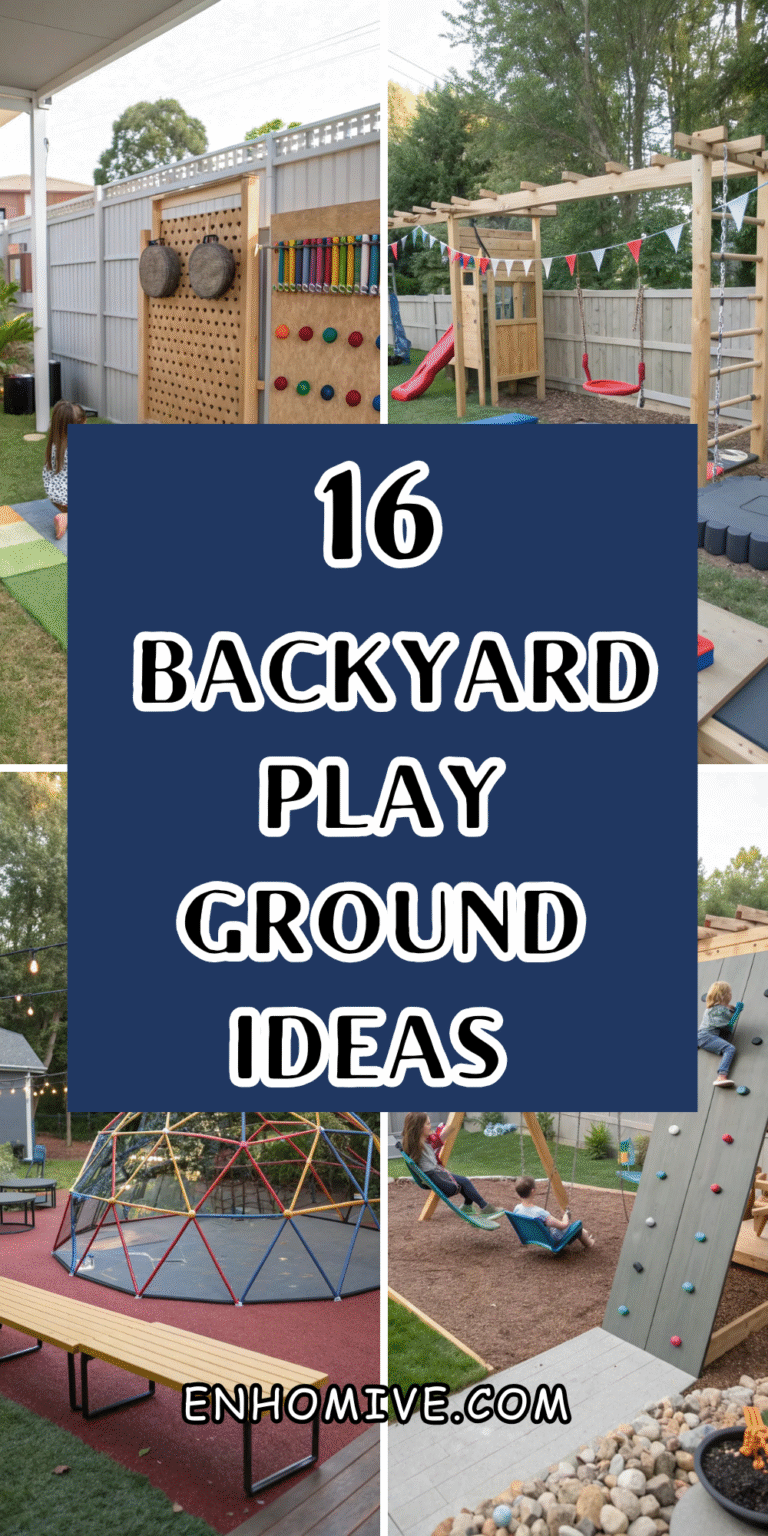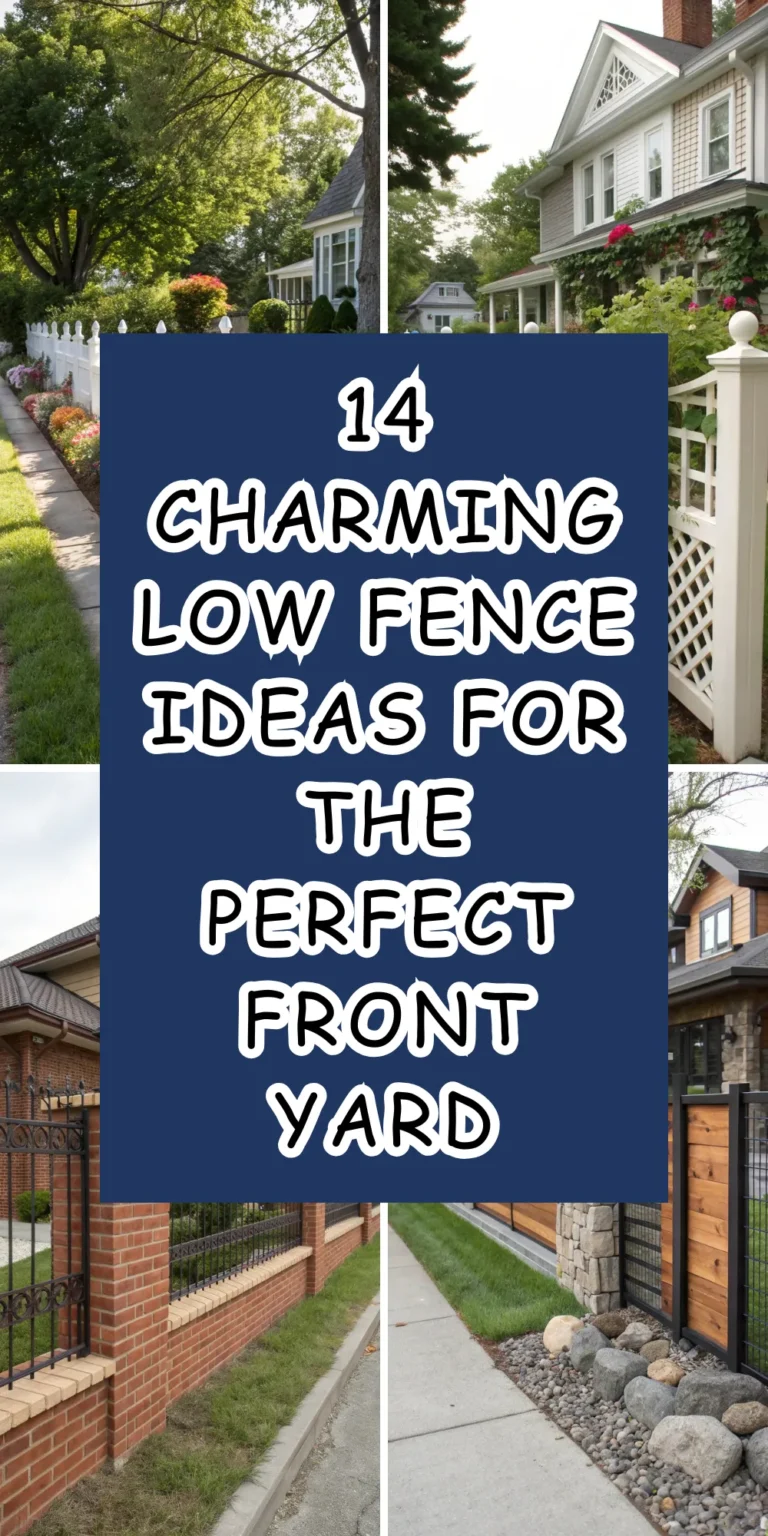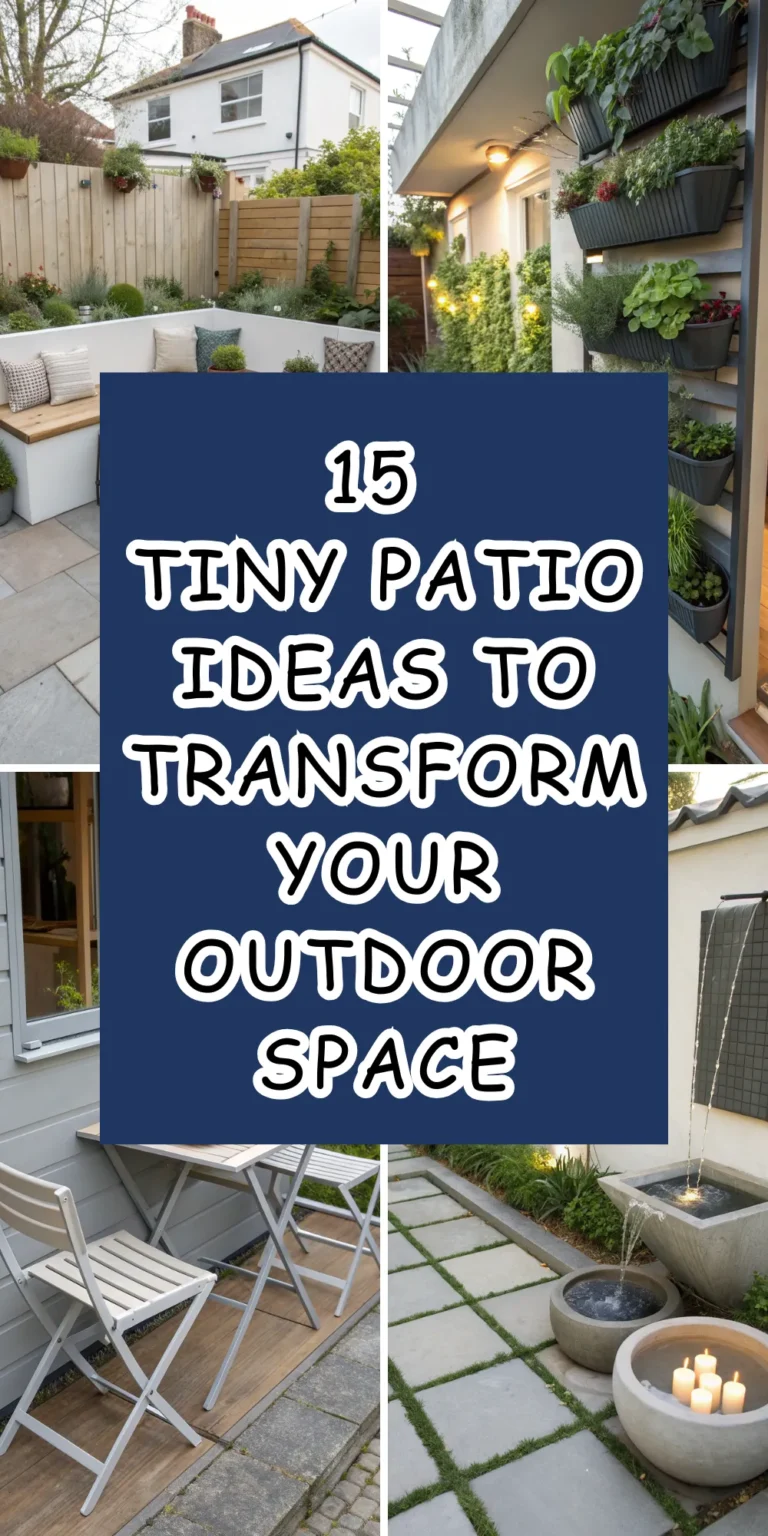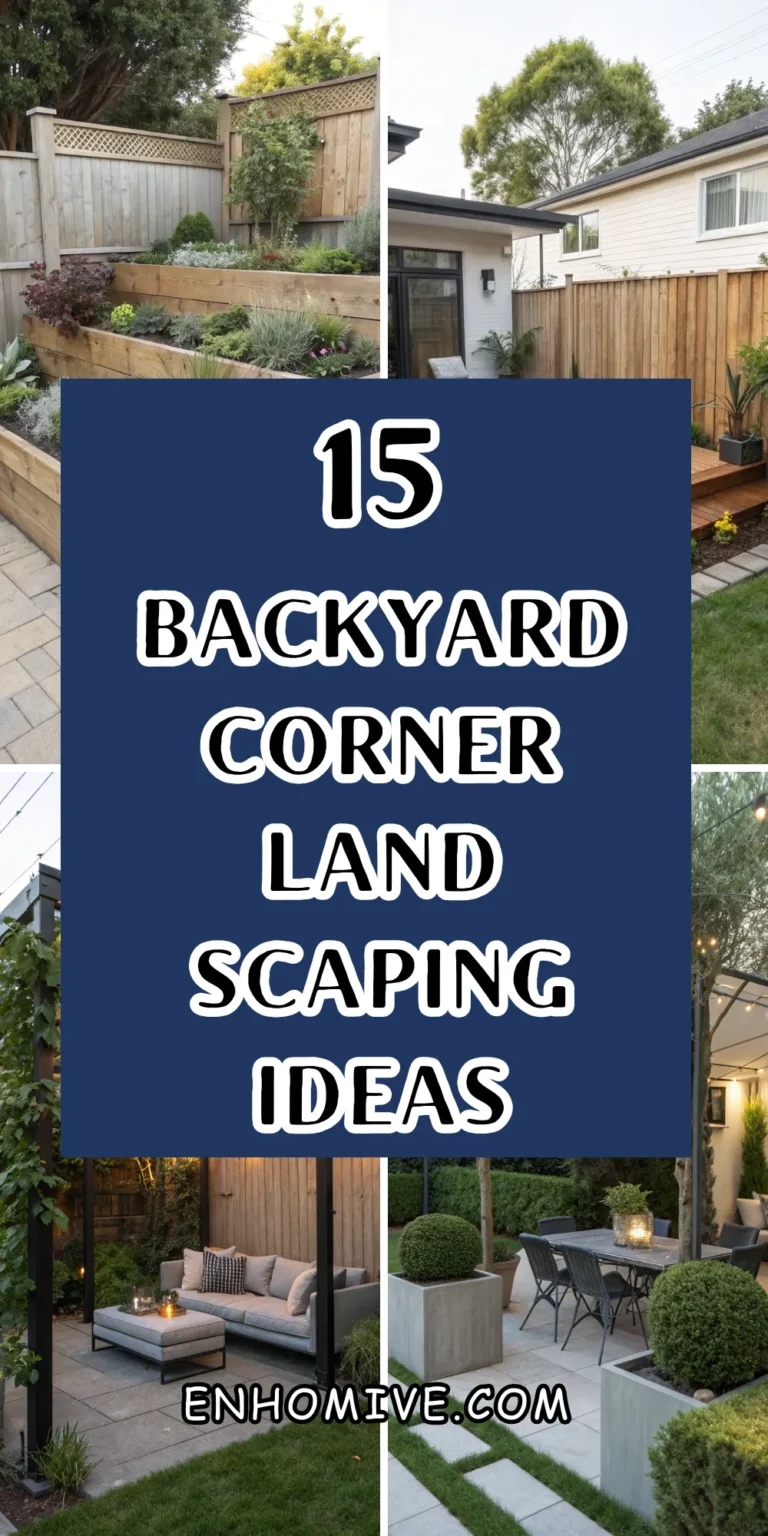18 Backyard Walkway Ideas for Inviting Paths
A thoughtfully designed walkway does more than simply connect two points in your backyard – it creates a journey that enhances the entire outdoor experience. The right path can transform your landscape from a collection of separate elements into a cohesive, flowing space that invites exploration and enjoyment.
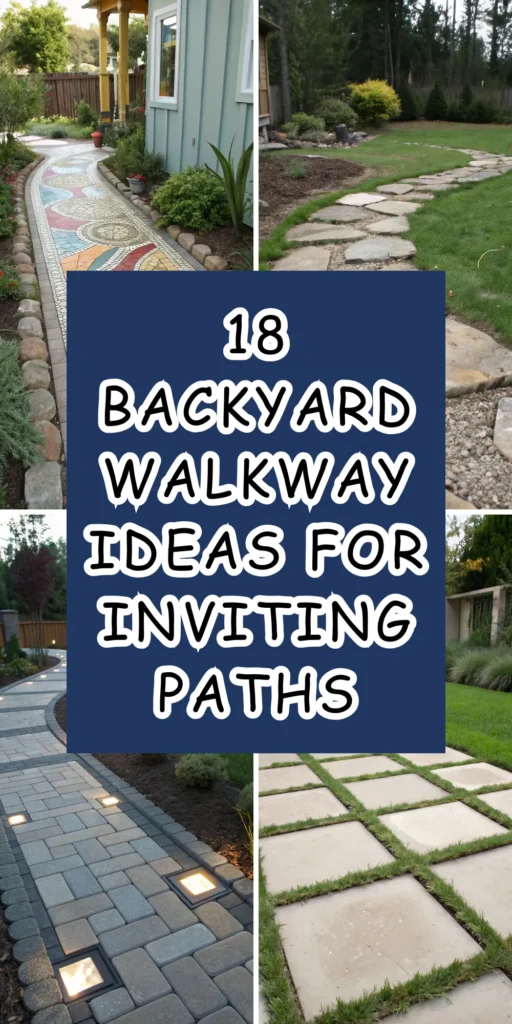
Whether you’re guiding guests to a secluded garden corner, creating safe passage to your outdoor entertaining area, or simply adding structure to your landscape design, the perfect walkway combines functionality with aesthetic appeal.
From rustic stepping stones that blend seamlessly with natural surroundings to sophisticated paved pathways that make bold design statements, these 18 walkway ideas will help you create inviting paths that enhance both the beauty and usability of your outdoor space.
1. Natural Stone Stepping Stones
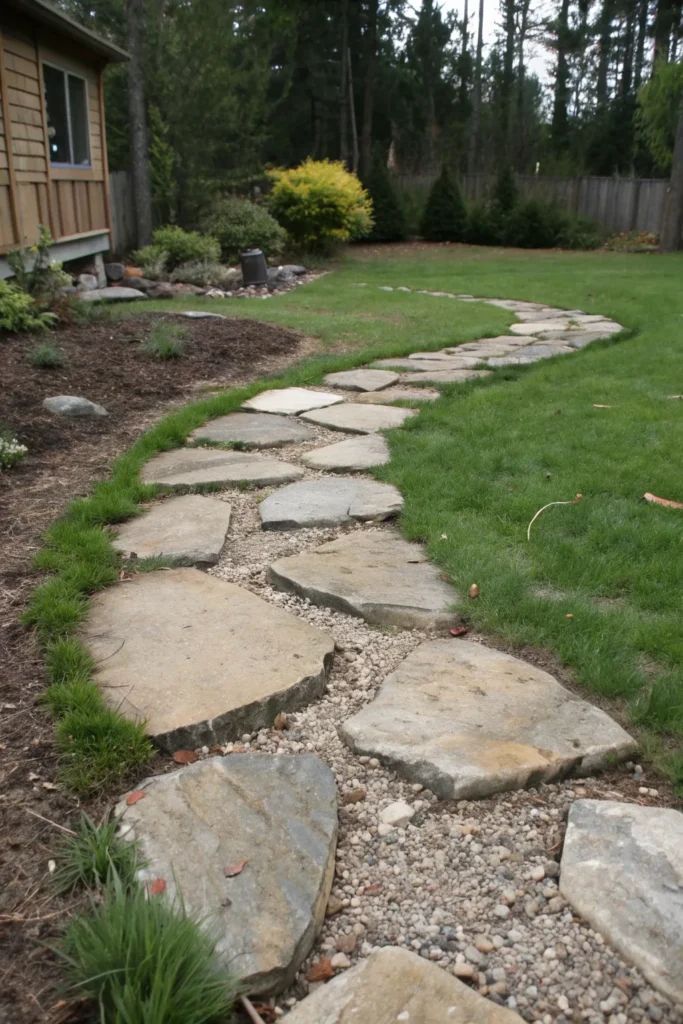
Choose stones that are at least 18 inches wide and thick enough to provide stable footing. The irregular spacing between stones creates a leisurely walking pace that encourages people to slow down and appreciate their surroundings. This approach works particularly well in cottage gardens, woodland settings, or anywhere you want to maintain a natural, unstructured feel.
The beauty of natural stone stepping stones lies in their ability to age gracefully, developing moss and weathering that enhances their natural appeal over time. Consider mixing different types of stone for varied textures and colors, or stick to one variety for a more cohesive look.
Pro Tips:
- Space stones 20-24 inches apart for comfortable walking stride
- Partially bury stones to create a more integrated, permanent appearance
- Choose flat-topped stones with rough surfaces for better traction in wet conditions
2. Brick Herringbone Pattern
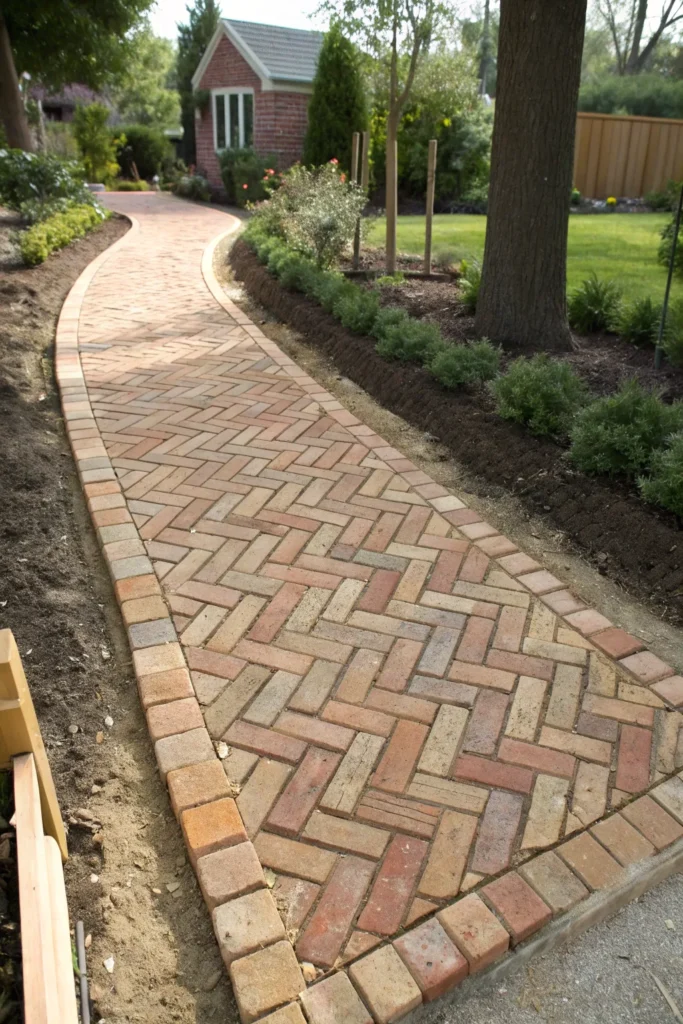
Design a classic, timeless walkway using traditional clay bricks arranged in an elegant herringbone pattern that adds sophistication and visual movement to your landscape. This time-honored technique creates a sense of direction while providing excellent drainage and long-lasting durability. The warm, earthy tones of brick complement virtually any architectural style and garden design.
The herringbone pattern requires careful planning and precise installation, but the results are worth the effort. Each brick should be firmly set in sand with proper edge restraints to prevent shifting over time. The pattern creates optical interest that draws the eye forward while providing a stable, comfortable walking surface.
Brick walkways develop character as they age, with subtle color variations and the occasional sprouting of moss or small plants between joints. This natural patina adds charm and authenticity to your outdoor space while maintaining the pathway’s structural integrity.
Pro Tips:
- Use a rubber mallet and level to ensure even brick placement
- Install proper edging materials to prevent brick migration
- Allow for slight crown in the center for water drainage
3. Decomposed Granite Path
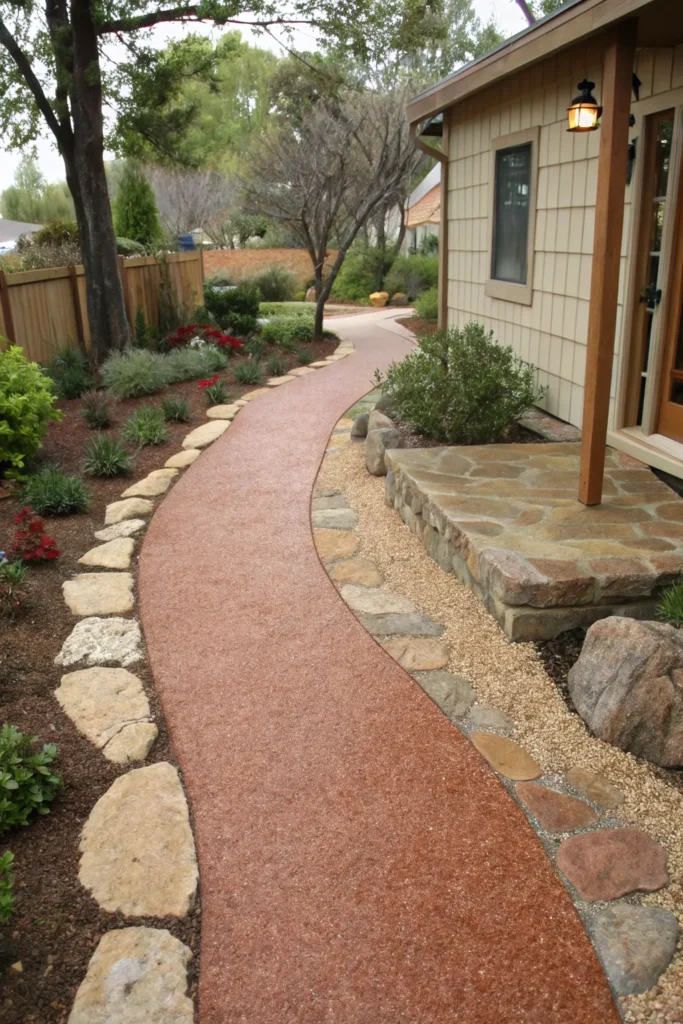
Install a smooth, naturally colored decomposed granite pathway that offers excellent drainage while creating a soft, organic appearance that complements both formal and informal garden designs. This crushed granite material compacts well to form a stable walking surface while maintaining the natural look of unpaved paths.
Decomposed granite comes in various colors from warm beiges to rich browns and even reddish tones, allowing you to choose a shade that complements your landscape palette. The material is relatively inexpensive and easy to install, making it an excellent choice for longer pathways or budget-conscious projects.
The fine texture of decomposed granite creates a pleasant walking experience while requiring minimal maintenance once properly installed. Occasional raking and the addition of fresh material in high-traffic areas will keep the pathway looking neat and well-maintained for years to come.
Pro Tips:
- Install landscape fabric beneath granite to prevent weed growth
- Create defined edges with metal or wood borders for a clean appearance
- Compact thoroughly with a plate compactor for best results
4. Wooden Boardwalk Style
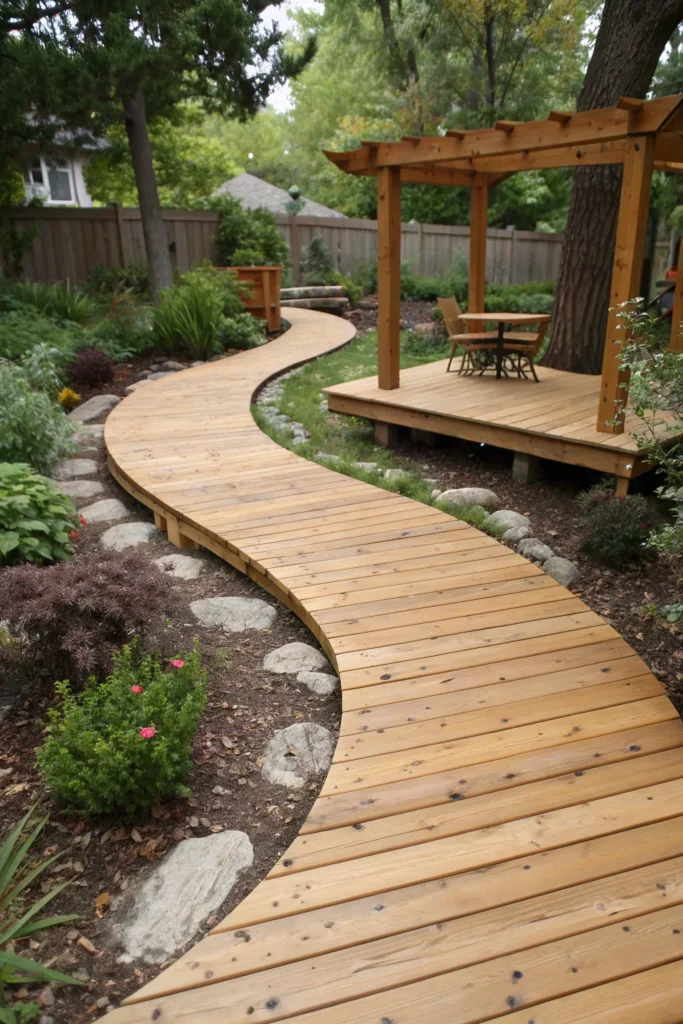
Construct an elevated wooden walkway that creates the feeling of strolling along a boardwalk while providing excellent drainage and protection for underlying plantings. This approach works especially well in areas with poor drainage, over delicate ground cover, or where you want to create visual separation between the path and surrounding landscape.
Choose naturally weather-resistant woods like cedar, teak, or pressure-treated lumber that can withstand outdoor conditions without frequent maintenance. The elevated design allows air circulation underneath while creating interesting shadows and depth in your landscape design.
Wooden boardwalks can be designed as simple straight paths or incorporate curves, angles, and even small platform areas for seating or plant displays. The natural texture and warm color of wood create an inviting, organic feel that complements both contemporary and traditional landscape styles.
Pro Tips:
- Use galvanized or stainless steel fasteners to prevent rust stains
- Allow adequate spacing between boards for drainage and expansion
- Apply wood preservative annually to extend the life of your walkway
5. Colorful Mosaic Tiles
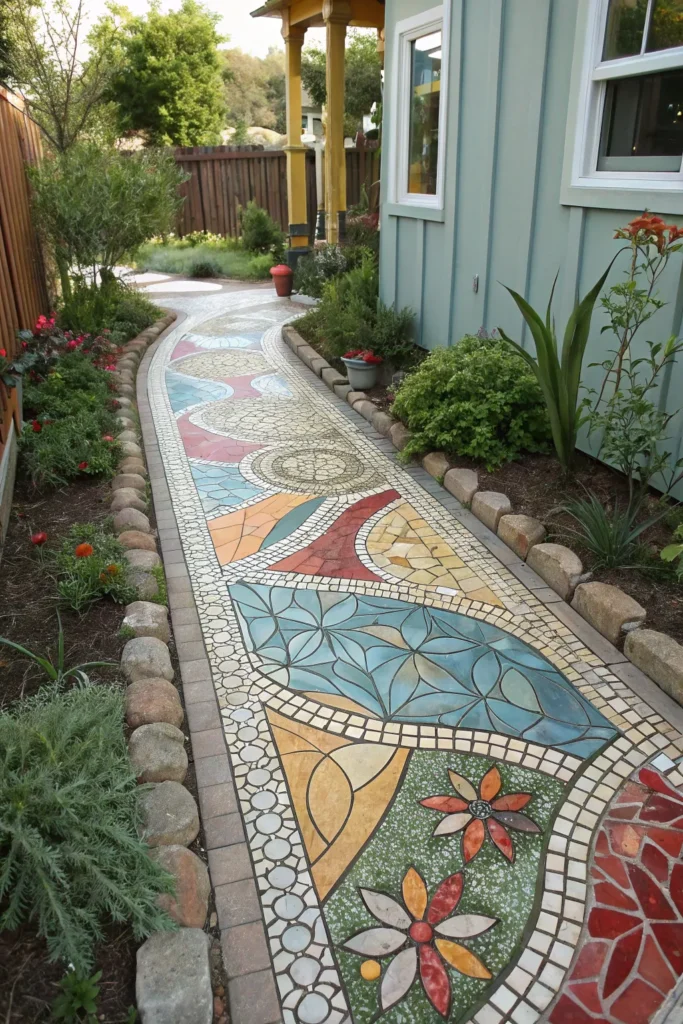
Create a vibrant, artistic pathway using colorful mosaic tiles that transform your walkway into a functional work of art. This approach allows for unlimited creativity in color combinations, patterns, and designs while providing a durable, weather-resistant surface that adds personality and visual interest to your outdoor space.
Mosaic tiles can be arranged in geometric patterns, flowing organic designs, or even representational images that reflect your personal style and complement your garden’s theme. The reflective quality of glazed tiles adds sparkle and movement to your landscape, especially when wet or in changing light conditions.
This technique requires more time and skill than simpler walkway options, but the results are truly unique and can significantly increase your property’s visual appeal and value. Consider incorporating tiles in colors that echo your home’s exterior or garden plantings for a cohesive design approach.
Pro Tips:
- Use outdoor-rated adhesive and grout designed for freeze-thaw conditions
- Create paper templates for complex patterns before beginning installation
- Seal grout lines regularly to prevent staining and weather damage
6. Gravel and Border Combination
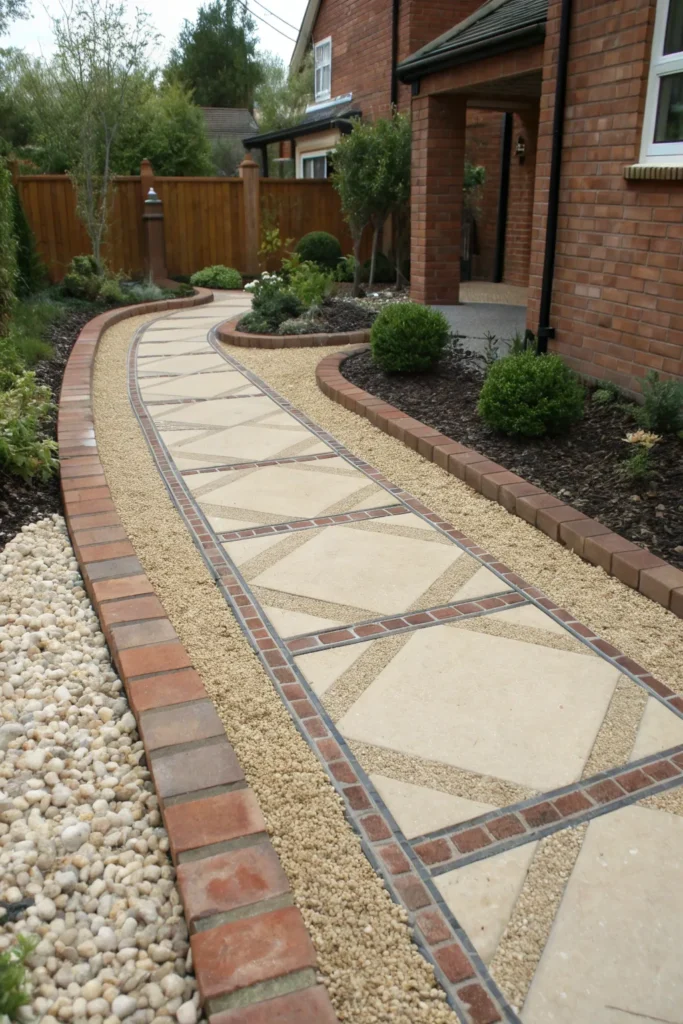
Design an elegant pathway combining decorative gravel with defined borders created from contrasting materials like brick, stone, or metal edging. This approach provides excellent drainage while creating clean, defined lines that add structure and formality to your landscape design.
Choose gravel size and color carefully to complement your overall design scheme. Smaller pea gravel creates a smoother walking surface, while larger decorative stones add more texture and visual interest. The border material should provide strong contrast to help define the pathway while echoing other hardscape elements in your landscape.
Regular maintenance involves occasional raking to keep gravel evenly distributed and removal of any weeds that might sprout along edges. The combination of materials creates visual interest while remaining relatively low-maintenance and cost-effective for longer pathways.
Pro Tips:
- Install landscape fabric to minimize weed growth in gravel areas
- Choose rounded gravel for more comfortable walking than angular crushed stone
- Maintain a slight crown in gravel paths to promote drainage
7. Concrete Pavers with Grass Joints
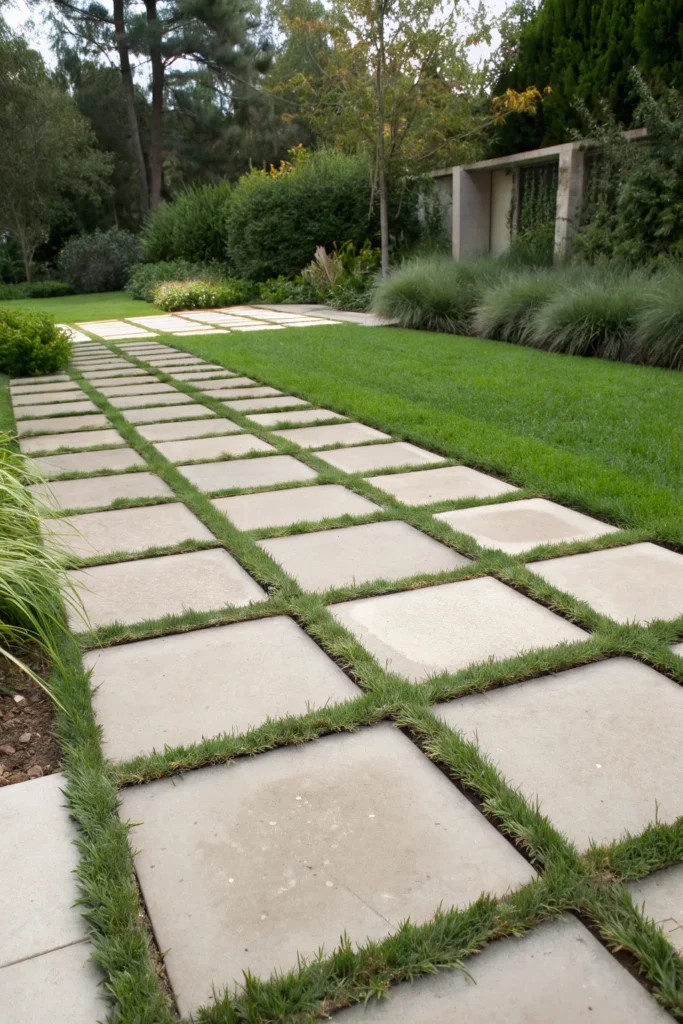
Install large concrete pavers with grass growing between joints to create a modern, sustainable pathway that softens the hard lines of traditional paving while providing stable footing. This approach combines the durability of concrete with the natural beauty of living plants, creating an environmentally friendly solution that manages stormwater runoff.
The grass joints require some maintenance but provide cooling benefits and help integrate the pathway into the surrounding landscape. Choose pavers in neutral colors that complement your home and garden, and consider textured surfaces for better traction in wet conditions.
This design works particularly well in contemporary landscapes where clean lines and sustainable practices are priorities. The contrast between hard and soft elements creates visual interest while maintaining the functionality needed for regular foot traffic.
Pro Tips:
- Choose drought-tolerant grass varieties for easier maintenance
- Ensure proper drainage beneath pavers to prevent settling
- Allow adequate space between pavers for healthy grass growth
8. Flagstone Irregular Pattern

Create an organic, flowing pathway using irregularly shaped natural stone stepping stones that blend harmoniously with your landscape. These stones can be placed directly on grass, nestled into ground cover, or surrounded by decorative gravel for a more defined look. The natural variations in color, texture, and shape add visual interest while maintaining a relaxed, informal atmosphere.
Create a sophisticated, natural-looking pathway using large flagstone pieces arranged in an irregular pattern that mimics the random beauty of natural stone formations. This approach provides excellent durability while maintaining an organic, unstructured appearance that complements both formal and informal landscape designs.
The irregular shapes and natural color variations of flagstone create visual interest while providing a stable, long-lasting walking surface. Gaps between stones can be filled with sand, gravel, or low-growing plants like moss or thyme for different aesthetic effects.
Proper installation requires careful fitting of irregular pieces, but the results are worth the effort. The natural beauty of flagstone improves with age, developing character through weathering while maintaining its structural integrity for decades.
Pro Tips:
- Select stones of similar thickness for easier installation and safer walking
- Test-fit pieces before final installation to ensure good joints
- Use stone dust or sand between joints for a more natural appearance
9. Circular Stepping Stone Pattern
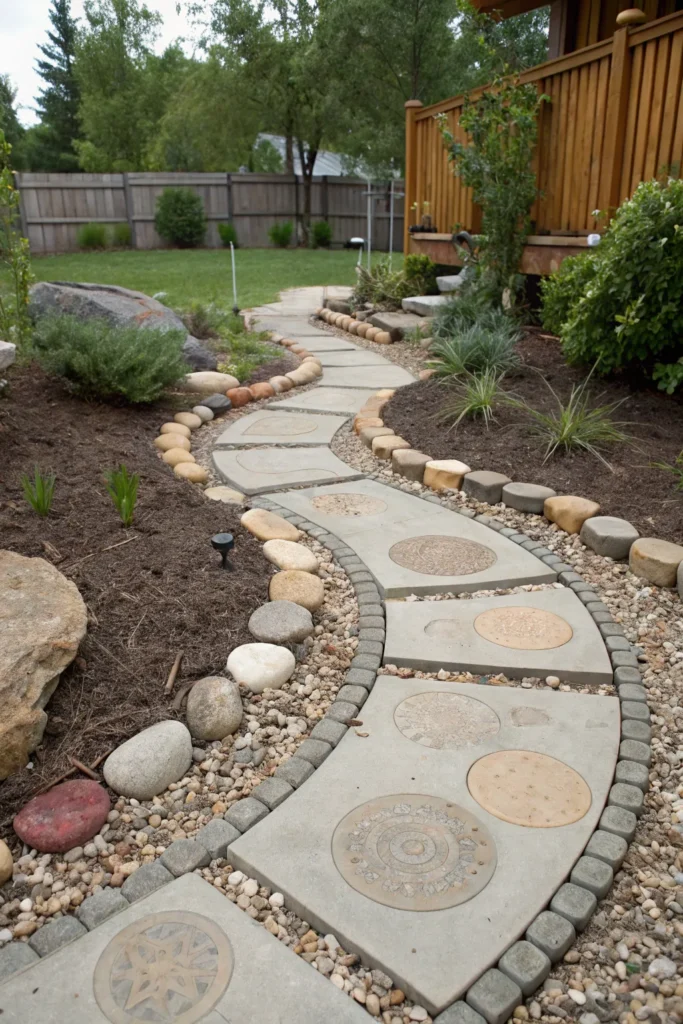
Design a whimsical pathway using round stepping stones arranged in flowing, curved patterns that create visual rhythm and encourage a leisurely walking pace. This approach adds playfulness to your landscape while providing practical passage through garden areas.
Round stones can be natural or manufactured in various materials including concrete, stone, or even recycled materials. The circular shape creates softer lines than rectangular pavers while the curved arrangement adds movement and visual interest to your landscape design.
Consider varying the sizes of circular stones or incorporating different materials for added visual complexity. The spacing between stones can accommodate ground cover plants or decorative materials that enhance the overall design.
Pro Tips:
- Vary stone sizes slightly to create more natural, organic appearance
- Plan curves carefully to ensure comfortable walking patterns
- Consider nighttime visibility when selecting stone colors and finishes
10. Mulched Path with Log Edging
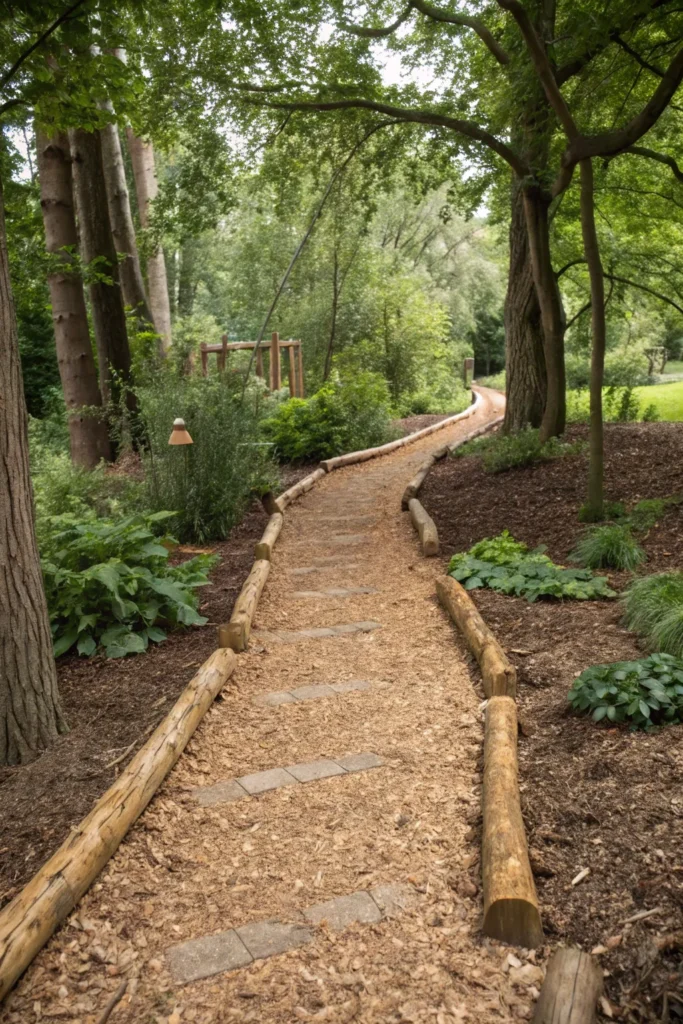
Create a natural, woodland-inspired pathway using organic mulch contained by rustic log edging that blends seamlessly with natural surroundings. This environmentally friendly approach uses renewable materials while providing comfortable footing and excellent drainage.
Choose logs that complement the scale of your pathway and surrounding landscape. Cedar or other naturally rot-resistant woods work best for longevity, though any locally available logs can be used for more budget-conscious projects.
The organic nature of this pathway means it will change and evolve over time as mulch decomposes and logs weather naturally. This aging process adds to the authentic, natural character while requiring periodic refreshing of mulch materials.
Pro Tips:
- Use partially decomposed mulch for better compaction and walking comfort
- Secure logs with rebar or stakes to prevent shifting
- Refresh mulch annually to maintain appearance and suppress weeds
11. Interlocking Concrete Pavers
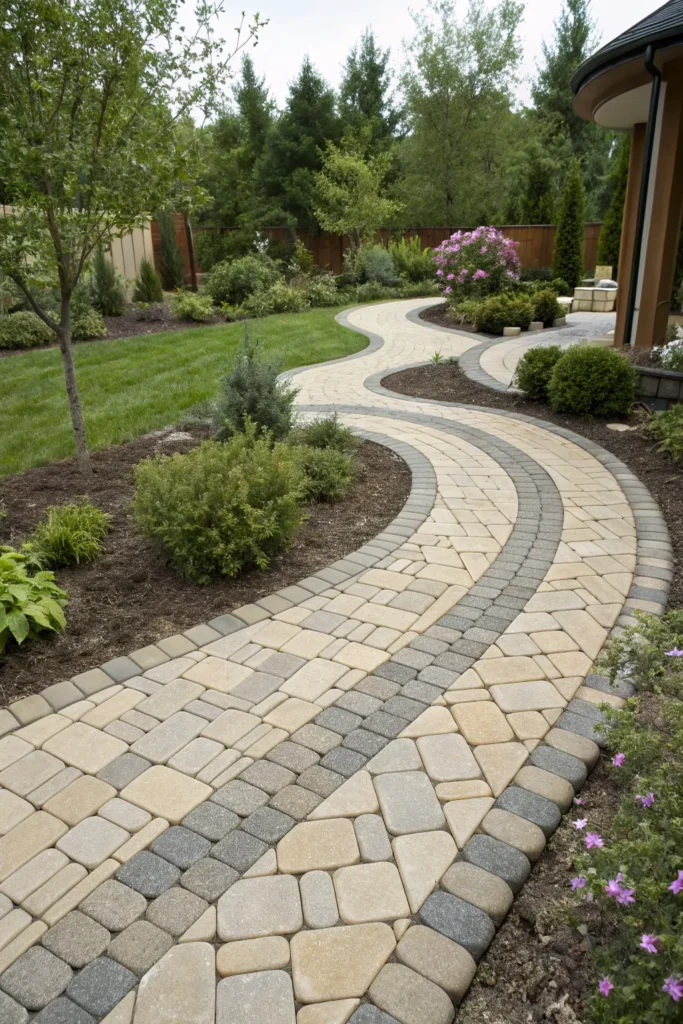
Install interlocking concrete pavers that provide the durability and clean lines of traditional paving with the flexibility to create curves, patterns, and interesting design details. Modern concrete pavers come in numerous colors, textures, and shapes that can complement any architectural style or landscape design.
The interlocking design provides excellent stability while allowing for some movement during freeze-thaw cycles without cracking. Installation over a properly prepared base ensures long-term performance with minimal maintenance requirements.
Consider incorporating different colors or textures to create borders, patterns, or visual interest along your pathway. The versatility of concrete pavers allows for creative designs while maintaining the practical benefits of a stable, all-weather walking surface.
Pro Tips:
- Ensure proper base preparation with compacted gravel for long-term stability
- Use polymeric sand between joints to prevent weed growth and insect infiltration
- Install edge restraints to prevent paver migration over time
12. Shell and Sand Pathway
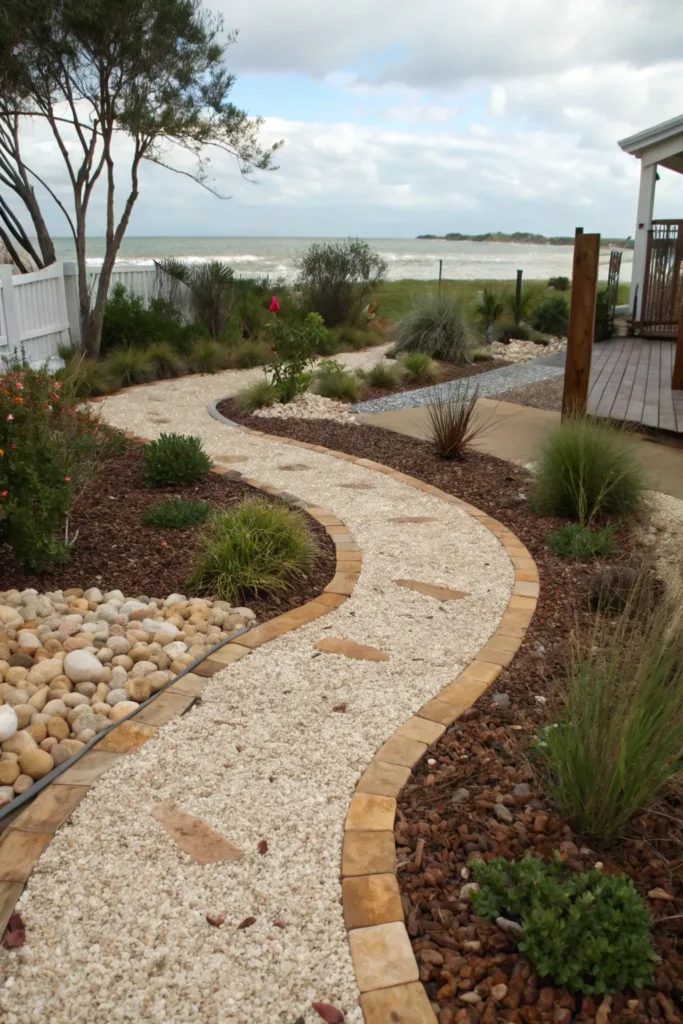
Create a coastal-inspired walkway using crushed shells mixed with sand that provides excellent drainage while adding texture and natural beauty to your landscape. This approach works particularly well in coastal areas or gardens with a beach or nautical theme.
The combination of shells and sand creates a pleasant walking surface with good drainage properties. The natural colors and textures complement seaside plantings while providing an authentic coastal atmosphere in your backyard space.
Regular maintenance involves occasional raking to keep materials evenly distributed and periodic addition of fresh shell material in high-traffic areas. The natural materials will settle and compact over time, creating an increasingly stable walking surface.
Pro Tips:
- Mix shells and sand in roughly equal proportions for best walking surface
- Install borders to contain materials and define pathway edges clearly
- Choose shells appropriate to your local environment for authentic appearance
13. Reclaimed Brick Rustic Path
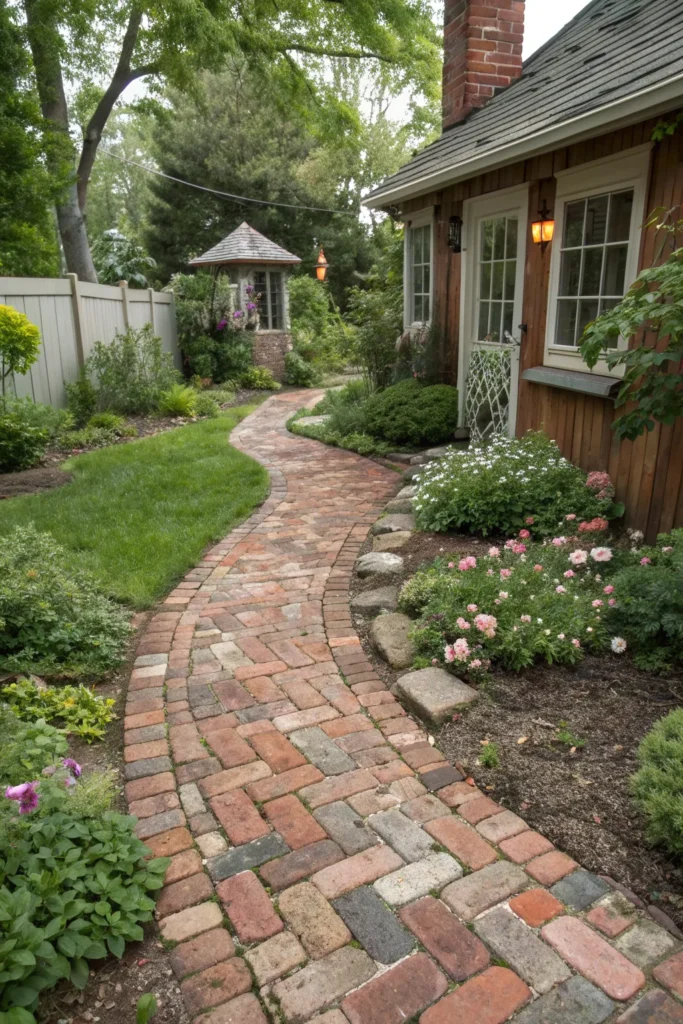
Design a charming pathway using reclaimed bricks that add historical character and environmental sustainability to your landscape design. Old bricks often have irregular shapes, varied colors, and interesting textures that create visual appeal while providing durable, long-lasting service.
The irregular nature of reclaimed materials means each brick is unique, creating a pathway with individual character and charm. The weathered appearance fits well with cottage gardens, vintage-inspired landscapes, or anywhere you want to add aged character to your outdoor space.
Installation of reclaimed bricks may require more time and creativity than working with uniform materials, but the unique results justify the extra effort. The historical character and environmental benefits of reusing materials add value beyond simple functionality.
Pro Tips:
- Clean reclaimed bricks thoroughly before installation to remove old mortar
- Sort bricks by thickness to create more uniform walking surface
- Embrace the irregular character rather than trying to achieve perfect uniformity
14. Permeable Rubber Matting
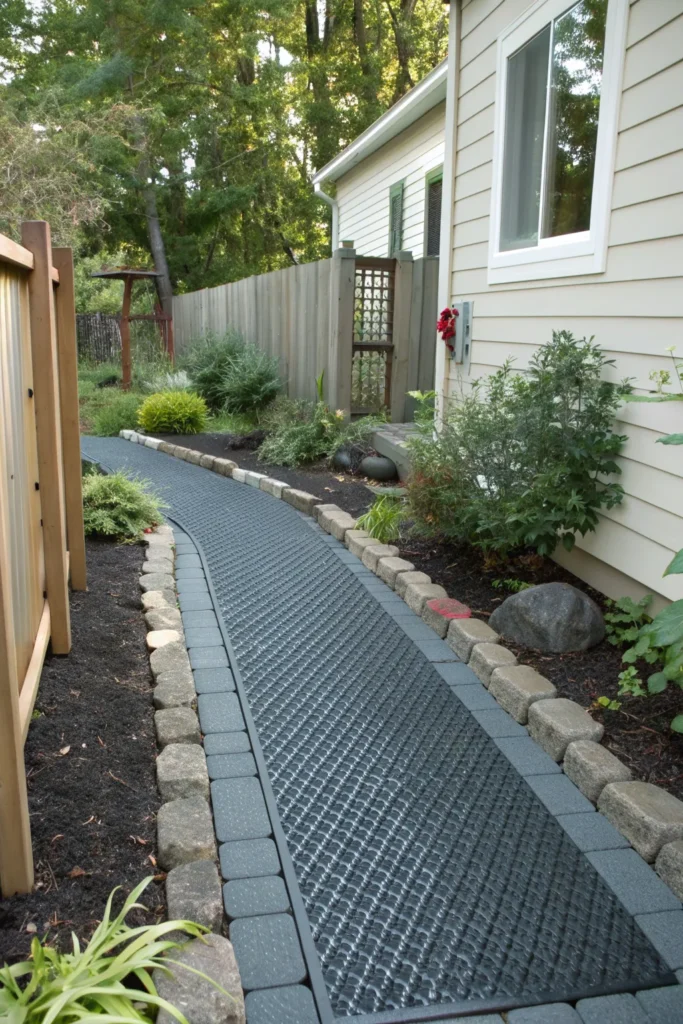
Install permeable rubber pathway matting that provides excellent traction and comfort while allowing water to drain through to underlying soil. This modern solution works well for areas where traditional hard surfaces might be too formal or where accessibility is a concern.
Rubber matting comes in various colors and textures, allowing you to create pathways that complement your landscape design while providing superior safety features. The material is particularly valuable in areas that might become slippery when wet or where older adults or individuals with mobility challenges need secure footing.
The permeable design allows rainwater to infiltrate naturally while the durable material stands up to heavy foot traffic and weather exposure. Installation is straightforward, and the material can be easily replaced in sections if damage occurs.
Pro Tips:
- Choose textured surfaces for better traction in wet conditions
- Ensure proper drainage beneath matting to prevent standing water
- Consider contrasting colors for pathway edges to improve visibility
15. Stamped Concrete Patterns
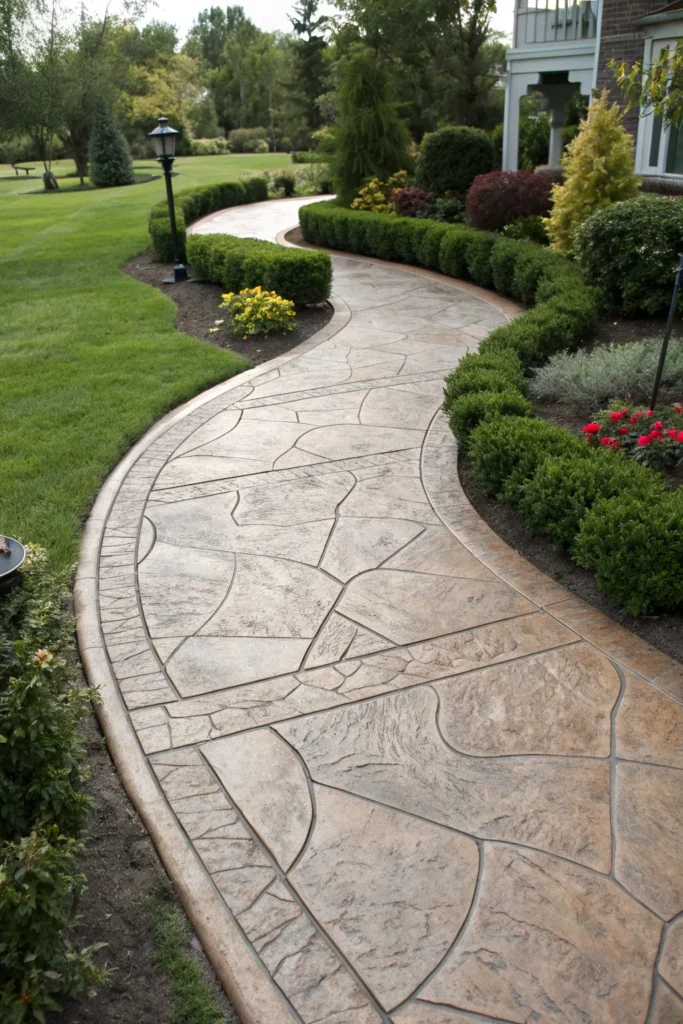
Create sophisticated pathways using stamped concrete that mimics the appearance of natural stone, brick, or tile while providing the durability and cost-effectiveness of concrete. Modern stamping techniques and coloring options allow for remarkably realistic appearances that can complement any landscape style.
Stamped concrete can be designed to replicate expensive materials while providing superior durability and lower long-term maintenance costs. The seamless surface eliminates joint issues while offering unlimited design possibilities through various patterns and color combinations.
Professional installation is typically recommended for best results, but the long-term benefits of stamped concrete make it an excellent investment for high-traffic pathways or areas where you want the appearance of premium materials without the associated costs.
Pro Tips:
- Choose patterns and colors that complement your home’s architectural style
- Apply sealer regularly to maintain color and prevent weather damage
- Plan expansion joints carefully to prevent unsightly cracking
16. Pine Needle and Twig Path
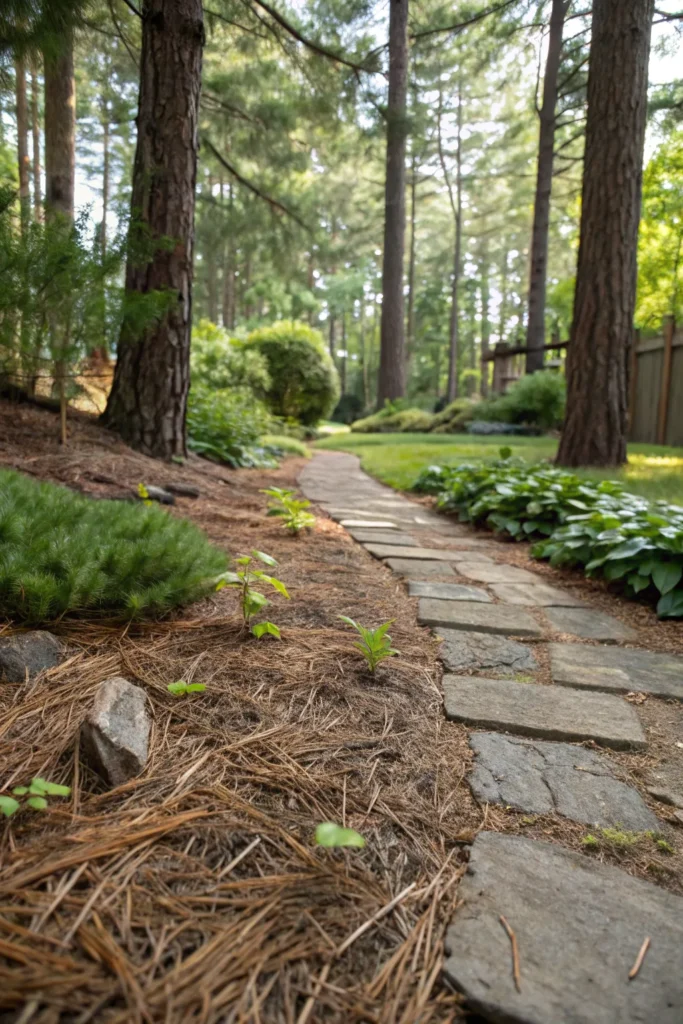
Design a soft, naturalistic pathway using pine needles and small twigs that creates an authentic forest floor experience while providing comfortable, quiet walking. This organic approach works particularly well under existing trees or in woodland garden settings.
The materials are often freely available from your own property or local sources, making this an economical choice for longer pathways. The natural aromatics of pine needles add sensory appeal while the soft surface provides comfortable walking and natural sound dampening.
This pathway type requires regular refreshing as organic materials decompose naturally, but this maintenance also contributes to soil improvement in surrounding areas. The natural cycling of materials creates an authentic ecosystem feel in your landscape.
Pro Tips:
- Layer materials thickly initially as they will compact and decompose over time
- Create subtle borders with stones or logs to contain organic materials
- Refresh pathway materials seasonally for best appearance and function
17. River Rock and Stone Path
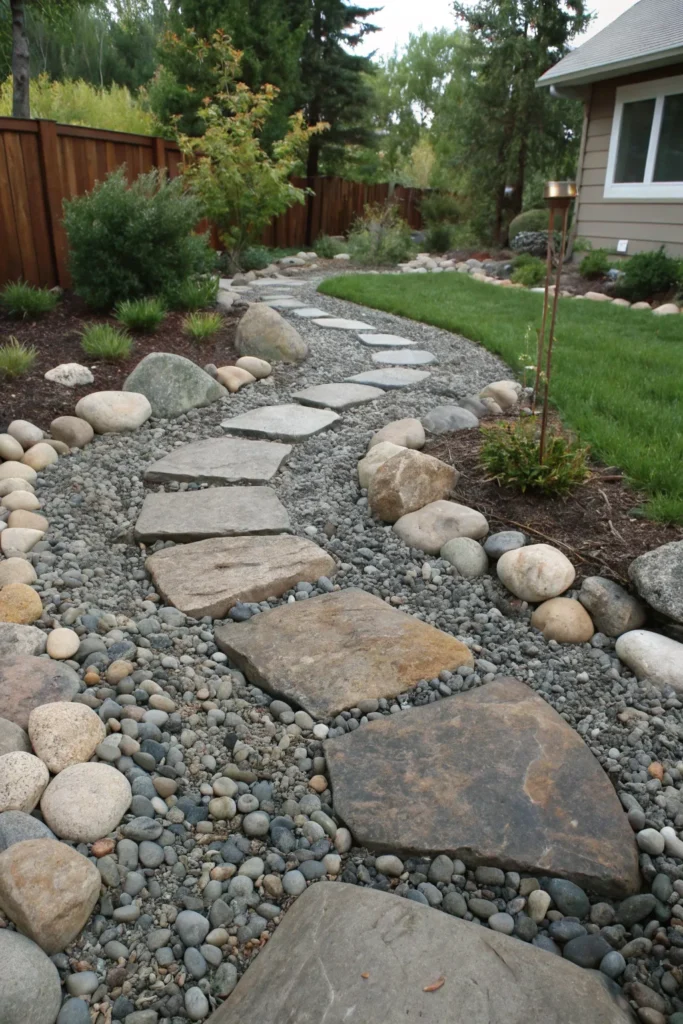
Create a textured, naturalistic pathway using a combination of river rocks and flat stepping stones that provides visual interest while maintaining comfortable walking. This approach combines the organic appeal of natural materials with practical functionality for regular use.
The contrast between smooth river rocks and flat stepping stones creates visual texture while the natural colors and shapes complement virtually any landscape style. The rocks provide excellent drainage while the stepping stones offer stable footing for safe passage.
Consider incorporating different sizes and colors of river rocks to create patterns or visual flow along your pathway. The natural materials weather beautifully and require minimal maintenance while providing long-term durability and appeal.
Pro Tips:
- Choose stepping stones large enough for comfortable foot placement
- Install landscape fabric beneath rocks to prevent weed growth
- Use a variety of rock sizes to create natural, organic appearance
18. LED-Integrated Modern Pavers
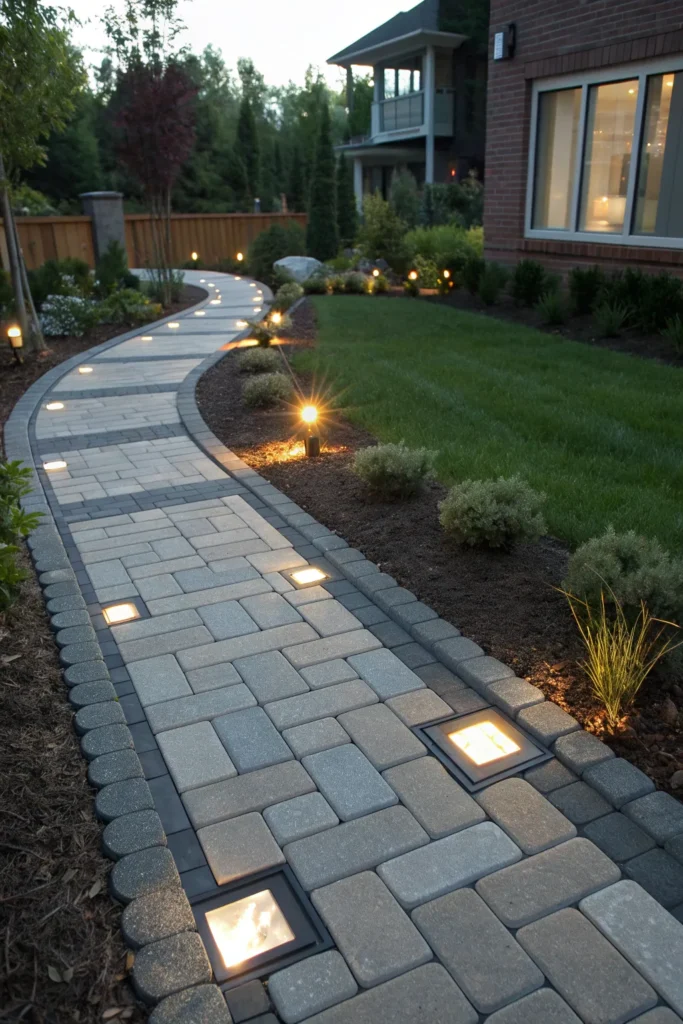
Install contemporary pavers with integrated LED lighting that provides both functional illumination and striking visual appeal for nighttime use. This high-tech approach combines practical lighting with modern aesthetics to create pathways that are both beautiful and highly functional after dark.
The integrated lighting eliminates the need for separate fixture installation while providing even, consistent illumination along the entire pathway length. Solar-powered options are available for environmentally conscious installations, while low-voltage systems offer reliable performance and easy integration with existing landscape lighting.
Modern LED pavers come in various sizes, colors, and light configurations, allowing for creative design possibilities that can transform your landscape after dark. The energy efficiency and long life of LED technology make this an increasingly practical option for pathway lighting.
Pro Tips:
- Plan electrical connections carefully before paver installation
- Choose warm white LED colors for most welcoming appearance
- Install dimmer controls to adjust lighting levels for different occasions
The perfect backyard walkway balances practical function with aesthetic beauty, creating paths that not only serve your daily needs but also enhance the overall enjoyment of your outdoor space. Whether you choose the rustic charm of natural materials, the sophisticated appeal of engineered products, or innovative solutions that incorporate modern technology, the key is selecting an approach that complements your landscape style, meets your maintenance preferences, and fits your budget.
Remember that pathways are long-term landscape investments that should be planned carefully and installed properly for years of reliable service. Consider how your chosen walkway will look in different seasons, how it will age over time, and how it will integrate with other elements in your landscape design. The right pathway becomes more than just a route through your garden – it becomes an integral part of the outdoor experience that guides visitors on a journey through your personal outdoor sanctuary.

